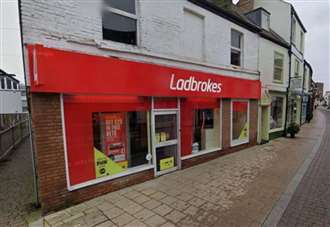-
 play_arrow
play_arrow
Kl 1 Radio Local radio for west Norfolk
-
 play_arrow
play_arrow
KL DISCO KL Disco Playing Disco Music from the 70's onwards.24/7
-
 play_arrow
play_arrow
KL COUNTRY KL COUNTRY Playing New and Classic Country Music 24/7
-
 play_arrow
play_arrow
KL ROX KL ROX The best of New and Classic Rock.24/7
-
 play_arrow
play_arrow
KL SUMMER Summer Vibes 24/7 from KL1 Radio across West Norfolk
-
 play_arrow
play_arrow
KL CLASSICAL Your Symphony Starts Here
-
 play_arrow
play_arrow
KL CHILL Just Chill!
-
 play_arrow
play_arrow
KL POP The Best POP Hits all day Long!
-
 play_arrow
play_arrow
KL XTRA KL XTRA
music_note
From the quay to the Tuesday Market Place: See how our town has changed over the past 15 years


The landscape of West Norfolk’s towns has changed dramatically over the centuries – with developments of the modern world adding to the land as technology has advanced.While we might not be able to visualise exactly how certain places have transformed in centuries past – thanks to the tech we now have at our fingertips, we can see the more recent changes with just the click of a few buttons.Google Maps ‘street view’ allows us to glimpse back through time at how parts of Norfolk have changed over the past decade or so – in this feature, we’re focusing on the changes to Lynn.
It’s not a very long period of time, but you may be surprised at how much has changed since 2009, when a lot of places were first snapped by Google Maps.We’re taking a look at just a few of those places that have seen changes over the last 15 years or so – take a look at these before and after pictures by holding and dragging the white spot in the middle of the images to see how things have changed.Tuesday Market Place The origins of the Tuesday Market Place are believed to date back to July 1529, when King Henry VIII granted a charter to Lynn, permitting the town to hold two markets each week.Although its size has reduced considerably in recent decades, a weekly market continues to be held here on a Tuesday, with a number of stalls at the end closer to the town centre. Most West Norfolk residents will also be aware of the Tuesday Market Place’s history of being a site of public executions in the 16th and 17th centuries.Alleged witches were burnt at the stake, including Margaret Read – who was found guilty of witchcraft and sentenced to death by burning in 1590. Legend has it that her heart burst from her chest and smashed into the building opposite, where there is an engraving of a heart at 15/16 Tuesday Market Place to this day.In more recent years, the market place has continued to be home to two of the town’s biggest yearly events, the Mart funfair – which itself has origins dating back to the 1200s when King John granted the town a charter – and the free Festival Too musical event.Both events bring thousands of people to the Tuesday Market Place every year – and Google Maps street view has documented how much it has changed in 15 years.Back in 2009, the location was mostly used as a car park as it is now, but the sections next to the Duke’s Head Hotel and outside of Prezzo were also used for parking and motorists could drive through them at that time. These sections are now pedestrianised and are not usually used by traffic, except for deliveries and emergency vehicles.Also, the Duke’s Head itself has changed in colour, from a previous pink hue to a powder blue.Meanwhile, a mini roundabout between the Tuesday Market Place and King Street is long gone, with a zebra crossing now allowing pedestrians to get to and from the two locations safely.Southgates roundabout and Hardwick RoadOne of Lynn’s most iconic buildings, The South Gate has been at the forefront of the southern entrance to the town for 600 years. Today, it is still used by traffic going into town, with motorists coming from Lynn in the direction of the roundabout travelling around it.In recent years, a masterplan to transform the Southgates area has been unveiled which is set to see the end of the busy roundabout.West Norfolk Council says that the Southgates Masterplan will create “an attractive and active gateway” that supports safer and greener movement and improved connections, better public space, and reflect “the rich history of the area whilst looking to the future”.Public consultations are set to begin and recommendations will be provided to the council’s cabinet in 2025.While we’ll likely be seeing a lot of transformation in the area in years to come, there’s been a fair amount of change over the last 15 years.Back in 2009, the land that is now home to The Gatehouse Hungry Horse pub, Lynn’s Travelodge and a Starbucks drive-thru was empty, apart from Kellard House which housed the Nar Ouse Regeneration Scheme office. Plans were submitted to demolish Kellard House and to construct business premises in its place in 2011.Now, all three businesses are regularly used by residents and visitors to Lynn.Hardwick and Scania WayTravelling just down the road, the Hardwick Industrial Estate is also a place which has seen much change over the last 15 years. What was once a landmark of Lynn’s skyline, the iconic Campbell’s Tower was still a feature on the Hardwick back in 2009.Campbell’s, the American-owned soup company, had been a major employer in the town and the tower was a place where thousands had earned their living for 52 years.While the factory closed in 2007, it remained standing until January 15, 2012, when it was demolished in a controlled explosion, triggered by 41-year-old Sarah Griffiths, who won a competition run by the Lynn News.It was a poignant moment as her father, factory worker Mike Locke, died in 1995 of severe scalding from a blast of steam.The demolition of Campbell’s Tower made way for Tesco to create a bigger store on the site, which opened in October 2013.Across the way, rival supermarket Sainsbury’s opened its Hardwick store in November 2012. The large store occupies a site formerly used by Pinguin’s frozen food depot – which changed its name to Greenyard Frozen in 2017 – before it moved to the main site further down the road after an extension.Greenpark AvenueElsewhere in the town, Greenpark Avenue – which connects North Lynn to the Lynnsport area – has much more of a residential area over the past 15 years, with the construction of hundreds of new homes and a primary school.What was previously green space is now home to Greenpark Academy – formerly St Edmund’s Academy on Kilham’s Way – which opened in early 2021.Baxter’s Plain Meanwhile, in the town centre, Baxter’s Plain has changed a fair amount in the last 15 years.Google Maps street view shows Westgate department store – which later became Beales – still as part of the street scene in 2009.The shop in the Vancouver Quarter was one of Anglia Regional Co-operative Society’s Westgate stores before it was sold to Beales in 2011, which itself closed in 2016.The site was redeveloped and became H&M in November 2019.The Argos building on New Conduit Street relocated into the Sainsbury’s store in the Vancouver Quarter in November 2019. While the work had not started when the Google Maps street view picture was taken last year, the building is currently being transformed into a new library and community hub.It will house a modern library, as well as learning facilities and a community hub, which will be available for a variety of uses by organisations, groups, and residents when services are moved over from the Carnegie library.And Baxter’s Plain area could also see a lot more change in years to come, with hopes that the Old Post Office building will become flats and retail and commercial units.South QuayAnyone visiting or travelling via the South Quay nowadays might not recognise it from 15 years ago.The Google Maps street view image from 2009 shows that derelict grain silos were still in situ at that time.In the same year, a report to West Norfolk Council’s cabinet requested to make a Compulsory Purchase Order relating to the ‘Grain Silo Site’ on land at South Quay, in order to facilitate the development of a strategic regeneration site.The site was formerly used for grain storage with cargos loaded from ships via the adjacent gantry, while the majority of the buildings were understood to date from circa 1960, with two others of earlier construction.The then-owners of the site were on the verge of submitting a planning application in 2008 but this was withdrawn.“The structures on the Grain Silo site are in poor condition and will deteriorate further over time,” the report said.“The site is considered to be an eye-sore and will detract from proposed development nearby.”The report added: “Owing to the uncertainty in respect of the Grain Silo site being developed, and its proximity to the Waterfront Regeneration Area, it is proposed that the borough council seek to gain ownership of this site, preferably by negotiation, but failing that by making use of compulsory purchase powers.”The Lynn News reported at the time that the council had intended to spend £750,000 buying and clearing the site, using is compulsory purchasing powers, but it was one of the schemes removed from its Decade of Development project.Work to dismantle the silos started in July 2010, after a Section 215 notice was issued in 2009 which required the site to be tidied up and various areas demolished.Former owners of the silo site, the Hertfordshire-based Inner Circle Group, had proposed a major development on the South Quay including a hotel and apartment complex, shops, a restaurant and cafe, but conservationists in the town feared it would be out of keeping.By 2015, West Norfolk Council’s cabinet again supported the acquisition of the grain silo site and council chiefs reached a preliminary agreement to buy the site.We could see a lot more transformation to the quay in years to come, as proposals for the regeneration of the riverfront were unveiled earlier this year.Among the plans are a hidden garden, an area for pop-up events and dryside facilities, as well as changes to the Custom House and a vacant site next to Devil’s Alley which used to house the silos.
Similar posts
Upcoming shows

Tom Green – Classic Hit Lunchtime
11:00 am - 1:00 pm

Darren Furzey – Classic Hit Weekend
1:00 pm - 3:00 pm

Lee Vincent – Classic Hit Saturday
3:00 pm - 6:00 pm

James Roberts – Saturday Anthems
6:00 pm - 8:00 pm

Liam Walsh – Guilty Pleasures
8:00 pm - 10:00 pm
-

NHS to open more mental health AEs to relieve pressure on hospitals

Zoo animals to get more space in long overdue welfare reforms

Deaf TikTok star died after failure by mental health services inquest finds

Opportunity for aspiring DJs arises as competition winner to perform at town festival

Badenoch urges Prime Minister to visit fishermen affected by EU trade deal
Message Us
Copyright The Mediasite UK - 2025



